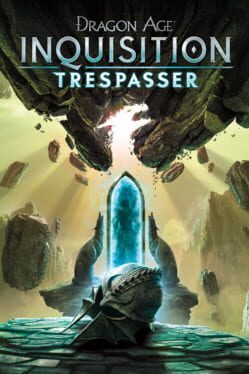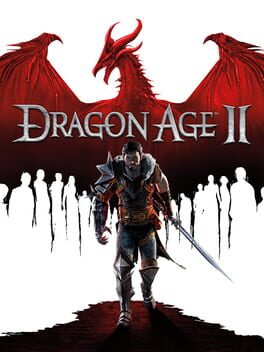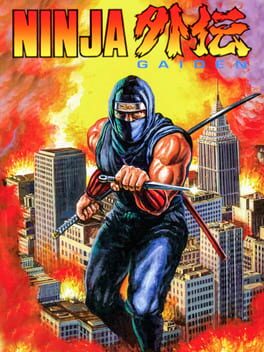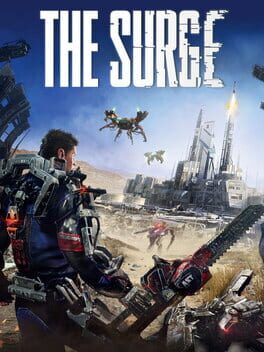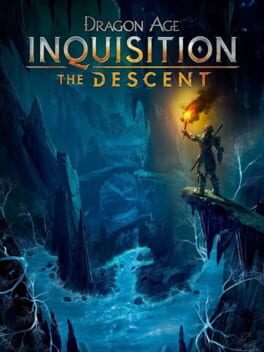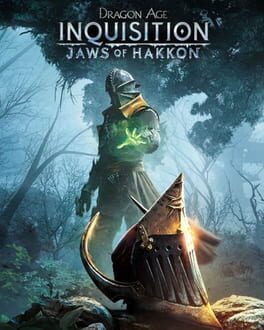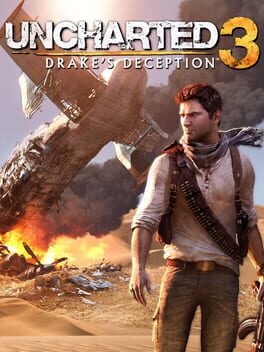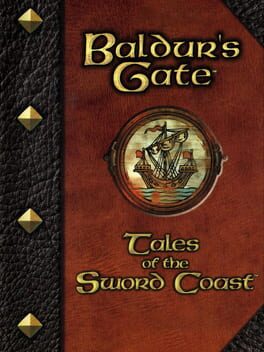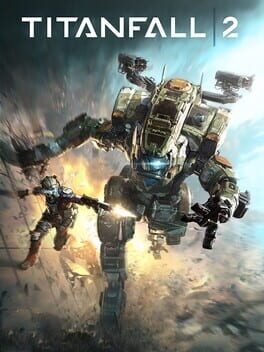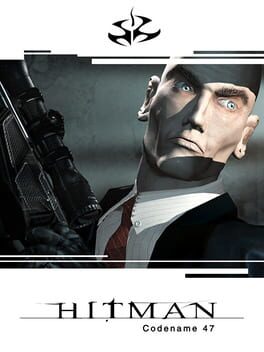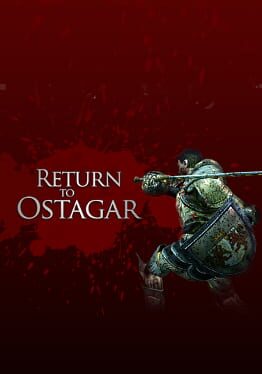squid0812
BACKER
One of the many strange little oddities that Nintendo developed for the 3DS. The baseball minigames that make up the brunt of the content here are amusing in the way that most well-made minigames are - which is to say, they are fun right up until they aren't. What's really memorable here, though, is the sad-sack dog who runs the sporting store, and the way he shamelessly haggles in an effort to convince the player to spend real-life money buying more minigames. Yes, that's right - Nintendo effectively programmed a Nintendo marketing employee into their game. It's actually not as obnoxious as it sounds, especially given that there's a fairly charming mini-narrative draped over the capitalism. More to the point, this is all largely a moot point given that the 3DS shop has gone the way of the dodo. Still, yet another notable instance of Nintendo ingenuity, even if this one is largely dedicated to clawing a few more bucks out of your wallet.
1986
The first entry in this storied franchise is also one of the very best platformers on the NES. The game's relative simplicity makes it easy to miss just how intelligent and well-considered its design choices really are. Every gameplay element - whether it be Simon's stodgy movement, the sub weapons, the enemy designs, or even the somewhat infamous knockback on hit - coheres into a rigorous and difficult yet thoroughly enjoyable whole. Something similar could be said of the visual and aural design - it may be a truism at this point to mention how excellent the music is, but it remains worth acknowledging just how well the classically-influenced songs and the vaguely psychedelic use of color come together to sustain a palpable sense of foreboding. Not to be missed.
An expansion that simply shouldn't have been an expansion. This is effectively the base game's missing ending - which makes the fact that they charged 20 bucks for this feel more than a little skeevy. That being said, Trespasser contains the most effective and focused storytelling in all of Inquisition (granted, faint praise) and it never really outstays its welcome despite featuring some fairly repetitive combat encounters toward the end. Solas is quite strong (and sympathetic) in the role of the archvillain, a satisfying change given how bland and uninteresting Corypheus was in the main game. And there's even a well-written and satisfying section in which you get to play catch-up with all of your old companions, ala the Citadel DLC from Mass Effect 3. Is it enough to salvage the game? Certainly not. Is it enough to make me want to play the next one? Probably, yeah.
2011
This review contains spoilers
What I really appreciate about Dragon Age II is its narrative structure. It plays out almost like a TV show with different seasons broken out into a well-paced triptych. There is something undeniably cool about how seemingly inconsequential side quests from Act 1 get further development in later parts of the game. And the way the three-act structure allows for a series of mini-climaxes to play out certainly helps build engagement (with the Act 2 conflict with the Qunari being a clear highlight).
What I really dislike about Dragon Age II, sadly, is pretty much everything else.
The encounter design in this game is some of the worst I've seen - the near-constant fights against bland trash mobs are bad enough, but the fact that random enemies consistently teleport in as the fights are ongoing eliminates even a basic semblance of intentionality. Infamously, the game has about five maps for the entire 50 hour experience - none of which contain anything that's particularly interesting to look at. More surprisingly, the companions are a mixed bag. I'm a big fan of Avelline and Varric, sure. But the cast beyond that is pretty suspect. Isabela, for instance, is a mostly one-dimensional sexpot the likes of which are no longer really acceptable in 2023. Fenris feels like an angry 12 year-old's idea for a DnD character. Merrill and Anders both have interesting personal conflicts that suffer from being cartoonishly overdrawn. Merrill's thirst for knowledge creating tension within her Dalish community, for example, is an interesting pitch that descends into absurdity when it becomes clear that her ultimate choice is basically to SLAUGHTER HER ENTIRE CLAN in exchange for learning a few more (largely uninteresting) facts about a magical artifact?!? And don't get me started on Anders, an extremely charming character from Awakening who has been profoundly changed after absorbing a spirit of Justice. His anguish over the mistreatment of his fellow mages is actually pretty affecting - until Act 3, when it's revealed that this seemingly complicated character has literally become a church-bombing terrorist.
This lack of subtlety is ultimately a death knell in main narrative as well. Through the first two acts, you might have been fooled into believing that this game is telling a complex story about the dangers of fanaticism and importance of building bridges between peoples. Then comes Act 3, in which the writers at BioWare smarmily inform us that your choices didn't matter, both sides are only as good as their worst individual, conflict is inevitable, and trying to alleviate tension and build friendship between dissenting groups is a total waste of time. This, to be quite frank, is some lazy bullshit. It's like someone who reads X-Men and comes to the conclusion that maybe all those xenophobic congressmen have a point - because Magneto exists, right? Well, no. Not even close.
How much of the bullshit in this game is there because of some greedy asshole in the EA executive suite? Probably a good amount of it, to be honest. But that doesn't excuse the writers at BioWare, who took an interesting pitch and decided to use it to tell a story that says nothing.
What I really dislike about Dragon Age II, sadly, is pretty much everything else.
The encounter design in this game is some of the worst I've seen - the near-constant fights against bland trash mobs are bad enough, but the fact that random enemies consistently teleport in as the fights are ongoing eliminates even a basic semblance of intentionality. Infamously, the game has about five maps for the entire 50 hour experience - none of which contain anything that's particularly interesting to look at. More surprisingly, the companions are a mixed bag. I'm a big fan of Avelline and Varric, sure. But the cast beyond that is pretty suspect. Isabela, for instance, is a mostly one-dimensional sexpot the likes of which are no longer really acceptable in 2023. Fenris feels like an angry 12 year-old's idea for a DnD character. Merrill and Anders both have interesting personal conflicts that suffer from being cartoonishly overdrawn. Merrill's thirst for knowledge creating tension within her Dalish community, for example, is an interesting pitch that descends into absurdity when it becomes clear that her ultimate choice is basically to SLAUGHTER HER ENTIRE CLAN in exchange for learning a few more (largely uninteresting) facts about a magical artifact?!? And don't get me started on Anders, an extremely charming character from Awakening who has been profoundly changed after absorbing a spirit of Justice. His anguish over the mistreatment of his fellow mages is actually pretty affecting - until Act 3, when it's revealed that this seemingly complicated character has literally become a church-bombing terrorist.
This lack of subtlety is ultimately a death knell in main narrative as well. Through the first two acts, you might have been fooled into believing that this game is telling a complex story about the dangers of fanaticism and importance of building bridges between peoples. Then comes Act 3, in which the writers at BioWare smarmily inform us that your choices didn't matter, both sides are only as good as their worst individual, conflict is inevitable, and trying to alleviate tension and build friendship between dissenting groups is a total waste of time. This, to be quite frank, is some lazy bullshit. It's like someone who reads X-Men and comes to the conclusion that maybe all those xenophobic congressmen have a point - because Magneto exists, right? Well, no. Not even close.
How much of the bullshit in this game is there because of some greedy asshole in the EA executive suite? Probably a good amount of it, to be honest. But that doesn't excuse the writers at BioWare, who took an interesting pitch and decided to use it to tell a story that says nothing.
1988
Conceivably the smoothest and most responsive action platformer on the NES. It's a game that requires precision from the get-go, which makes the first 4 or 5 levels function almost like a rhythm game. The most satisfying way I found to play was to die a lot while memorizing the level and then, once the level was solidly etched into my cerebellum, simply hold down the forward button and enter a fugue state as I rapidly input a cadenced set of jumps and slashes.
For most of the game, this works pretty well. It's a game much more about the hands than the head, which will never be ideal for me. But the slick platforming, paired with some hilariously over-the-top cutscenes, makes for an entertaining mixture.
Then comes the last level.
Level six of Ninja Gaiden has to be one of the cheapest and most demoralizing game sequences on this side of Battletoads. The level of precision required elevates to a whole new level (you basically have to be frame-perfect in several areas). The enhanced difficulty exacerbates some of the NES-era BS (i.e. enemies who respawn the instant their former position goes off screen) that was easier to swallow in the more forgiving early levels. Save states have largely obviated this last issue, but it's hard to overstate how demoralizing it is die on the (extremely tough) final boss and then discover that the last three checkpoints were effectively meaningless. It's not even a darkly amusing troll like the end of Ghosts n' Goblins; it's just sadism, pure and simple. And that's a shitty note to end on.
For most of the game, this works pretty well. It's a game much more about the hands than the head, which will never be ideal for me. But the slick platforming, paired with some hilariously over-the-top cutscenes, makes for an entertaining mixture.
Then comes the last level.
Level six of Ninja Gaiden has to be one of the cheapest and most demoralizing game sequences on this side of Battletoads. The level of precision required elevates to a whole new level (you basically have to be frame-perfect in several areas). The enhanced difficulty exacerbates some of the NES-era BS (i.e. enemies who respawn the instant their former position goes off screen) that was easier to swallow in the more forgiving early levels. Save states have largely obviated this last issue, but it's hard to overstate how demoralizing it is die on the (extremely tough) final boss and then discover that the last three checkpoints were effectively meaningless. It's not even a darkly amusing troll like the end of Ghosts n' Goblins; it's just sadism, pure and simple. And that's a shitty note to end on.
1986
For the first few hours of the original Zelda, it's quite easy to see how exhilarating this must have been for those playing on the NES in 1986. The game is brilliantly forthright in its emphasis on player choice and the freedom to explore - famously, the game's first screen abruptly presents the player with four routes to choose from, with a liberating lack of guidance on which option is 'correct.' The first few hours build a satisfying loop of exploring for dungeons, collecting key items, and engaging in some serviceable if basic hack-n-slash combat.
Alas, the back half of the game engages with a lot of cumbersome NES-era design concepts that render this a rather fatiguing experience that is probably best played with save states and a guide in 2023. The game's emphasis on secrets, so effective in the early hours when the riddles are logical and the hidden areas are well-telegraphed, becomes a true drag when it becomes about bombing or burning random sprites on each screen. This wouldn't be such a big deal if one could just ignore these, but the hidden rupee stashes are effectively necessary for acquiring some of the high-level treasures (some which are obtusely concealed in their own right) that make the late-game dungeons feel doable. Which brings us to the other major issue: the last few dungeons are interminable slogs, replete with dead ends, confusing pathways, and enemies that range from tedious (Darknuts) to cheap (god, I hate Wizzrobes in this game).
A lot of these issues, of course, were effectively a fait accompli given the technical limitations of the NES and comparatively primitive design trends of the time. Despite being a flawed gameplay experience in 2023, the original Zelda deserves to celebrated as the progenitor of a design premise that served as a baseline for some of the greatest games of all time (including, not incidentally, Breath of the Wild).
Alas, the back half of the game engages with a lot of cumbersome NES-era design concepts that render this a rather fatiguing experience that is probably best played with save states and a guide in 2023. The game's emphasis on secrets, so effective in the early hours when the riddles are logical and the hidden areas are well-telegraphed, becomes a true drag when it becomes about bombing or burning random sprites on each screen. This wouldn't be such a big deal if one could just ignore these, but the hidden rupee stashes are effectively necessary for acquiring some of the high-level treasures (some which are obtusely concealed in their own right) that make the late-game dungeons feel doable. Which brings us to the other major issue: the last few dungeons are interminable slogs, replete with dead ends, confusing pathways, and enemies that range from tedious (Darknuts) to cheap (god, I hate Wizzrobes in this game).
A lot of these issues, of course, were effectively a fait accompli given the technical limitations of the NES and comparatively primitive design trends of the time. Despite being a flawed gameplay experience in 2023, the original Zelda deserves to celebrated as the progenitor of a design premise that served as a baseline for some of the greatest games of all time (including, not incidentally, Breath of the Wild).
2017
The seed of a decent idea buried under a pile of aggressively mediocre design concepts. I actually sort of appreciated the slow, plodding combat, but as with most Deck13 games, the overall aesthetic is so insipid that any minor pleasures are largely drowned out.
The interesting yet unrefined idea at the heart of this game is the dismemberment mechanic. Your melee attacks can target specific body parts and you can cut off various appendages in order to get better weapons and / or armor. This is fun at first, but eventually it becomes easy to spam, and the game ultimately doesn't do enough to build in complexity or alleviate the redundancy of repeatedly facing down the same basic enemy types (80% of the enemies in this game fall into one of two tired archetypes - there's quick-light-armor-man and slow-heavy-weapon-man).
Minor mechanical amusements aside, the narrative and aesthetic choices are consistently dull and uninspired. The story takes an extremely weak swing at Souls-style obliqueness, but ultimately ends up being bog standard sci-fi claptrap - it features some cartoonishly irresponsible corporate barons and A.I. run amuck, along with a smorgasbord of other well-trodden clichés.
I might've been able to partially look past the hackneyed narrative if it weren't for the fact that the dire lack of imagination is also reflected in the level and environmental design. After a tolerable start in a post-apocalyptic junkyard, most of the rest of the game takes place in a bland and anonymous maze of generic tech hallways. There's a decent diversion in a corporate suite towards the end, but that simply didn't make up for the confusion, the boredom, and the abject lack of interesting things to see. Skipping ahead to the more playable sequel is advisable.
The interesting yet unrefined idea at the heart of this game is the dismemberment mechanic. Your melee attacks can target specific body parts and you can cut off various appendages in order to get better weapons and / or armor. This is fun at first, but eventually it becomes easy to spam, and the game ultimately doesn't do enough to build in complexity or alleviate the redundancy of repeatedly facing down the same basic enemy types (80% of the enemies in this game fall into one of two tired archetypes - there's quick-light-armor-man and slow-heavy-weapon-man).
Minor mechanical amusements aside, the narrative and aesthetic choices are consistently dull and uninspired. The story takes an extremely weak swing at Souls-style obliqueness, but ultimately ends up being bog standard sci-fi claptrap - it features some cartoonishly irresponsible corporate barons and A.I. run amuck, along with a smorgasbord of other well-trodden clichés.
I might've been able to partially look past the hackneyed narrative if it weren't for the fact that the dire lack of imagination is also reflected in the level and environmental design. After a tolerable start in a post-apocalyptic junkyard, most of the rest of the game takes place in a bland and anonymous maze of generic tech hallways. There's a decent diversion in a corporate suite towards the end, but that simply didn't make up for the confusion, the boredom, and the abject lack of interesting things to see. Skipping ahead to the more playable sequel is advisable.
This definitely feels a bit tangential, but I'll admit to being an easy mark for the type of extended, self-contained dungeon crawl on offer here. Nonetheless, more environmental variation would have gone a long way to making this more engaging - a little more glowing ocean of lyrium and a little less generic dwarven tunnel would have suited my fancy.
Also, I have no clue what to make of the story implications here. The narrative beats work fine in isolation, but the lore ramifications for the larger Dragon Age mythos are frankly massive in a way that feels completely out of whack with what this is - a mostly extraneous, four hour long side story. But, oh well - if the history of the series is any indicator, we'll probably learn more in Dragon Age 6.
Also, I have no clue what to make of the story implications here. The narrative beats work fine in isolation, but the lore ramifications for the larger Dragon Age mythos are frankly massive in a way that feels completely out of whack with what this is - a mostly extraneous, four hour long side story. But, oh well - if the history of the series is any indicator, we'll probably learn more in Dragon Age 6.
In some ways, this is a dramatic improvement over the main game. Indeed, the Frostback Basin is a decent mock-up for what the zones in the base game should have looked like. There's a coherent narrative and some consistent theming that's completely missing in, say, the Emerald Graves, or the Hissing Wastes, or any of the other utterly fungible areas from the main game.
That being said, roughly one third of the content here is still meaningless fluff - the lack of editorial wisdom remains dire. "I believe more in the scissors than I do in the pencil" - that's Capote, and he's right on. I just wish someone at BioWare had listened while they were making this game (though, the same could be said of the equally turgid Mass Effect: Andromeda, so one wouldn't be wrong to assume that the misguided devotion to bloat is now a studio hallmark).
That being said, roughly one third of the content here is still meaningless fluff - the lack of editorial wisdom remains dire. "I believe more in the scissors than I do in the pencil" - that's Capote, and he's right on. I just wish someone at BioWare had listened while they were making this game (though, the same could be said of the equally turgid Mass Effect: Andromeda, so one wouldn't be wrong to assume that the misguided devotion to bloat is now a studio hallmark).
1991
A highly derivative yet breezy and enjoyable amalgamation of various gameplay modes that were well-trodden in the NES era. Your main fix is 2-D action platforming and amusingly nonsensical cutscenes lifted straight from the Ninja Gaiden collection (mercifully, this game never quite reaches the ball-breaking level of difficulty seen in that series). Along the way the developers serve up a few brief interludes of visually chaotic but mechanically simple overhead driving and light gun arcade-style first person shooting.
There's not an inkling of depth or originality to any of this, but the liberal borrowing from more pioneering titles undeniably works in the game's favor - you may have seen it all before, but that doesn't make it any less fun in the hands. Add in the fact that the pixel art and backgrounds here look significantly better than in nearly all of its antecedents, and you have a decent way to kill 90 minutes.
There's not an inkling of depth or originality to any of this, but the liberal borrowing from more pioneering titles undeniably works in the game's favor - you may have seen it all before, but that doesn't make it any less fun in the hands. Add in the fact that the pixel art and backgrounds here look significantly better than in nearly all of its antecedents, and you have a decent way to kill 90 minutes.
A classic example of an old dictum: trying to recapture lightning in a bottle is a fool's errand that only results in a less inspired piece of art. Fresh off the success of Uncharted 2, Naughty Dog clearly took a long look at their template for that game and came away with a series of pretty juvenile conclusions. Bigger set pieces, more exotic locales, more shooting - that was the way forward to even more triumphant success.
The problem is that they neglected a lot of the stuff that actually made the second game stand out - namely, the spot-on pacing (torpedoed here by a bloated opening act that features extended visits to not one, but two mostly extraneous locations to collect some pointless MacGuffins) and punchy banter that made it feel like you were starring in a modern-day Flash Gordon serial (still here, though less consistently; I personally could have done without the entire flashback subplot where Sully deals with Nate's daddy abandonment issues).
What results is a game whose primary sin is being eminently forgettable. It's not a gameplay issue. The act of playing this is largely similar to any other Uncharted - the bland and tiresome combat is counterbalanced with puzzles that are usually fine but are also rather repetitive. But the actual problem is that the real things that drive people play these games feel so thoroughly uninspired. There are a few exciting bits, a few wisecracks that may make provoke a chuckle or two. But there's absolutely nothing here that didn't immediately leave my brain always and forever as soon as the credits rolled. I enjoy my frivolous diversions just as much as the next person. But empty calories have rarely felt any emptier.
The problem is that they neglected a lot of the stuff that actually made the second game stand out - namely, the spot-on pacing (torpedoed here by a bloated opening act that features extended visits to not one, but two mostly extraneous locations to collect some pointless MacGuffins) and punchy banter that made it feel like you were starring in a modern-day Flash Gordon serial (still here, though less consistently; I personally could have done without the entire flashback subplot where Sully deals with Nate's daddy abandonment issues).
What results is a game whose primary sin is being eminently forgettable. It's not a gameplay issue. The act of playing this is largely similar to any other Uncharted - the bland and tiresome combat is counterbalanced with puzzles that are usually fine but are also rather repetitive. But the actual problem is that the real things that drive people play these games feel so thoroughly uninspired. There are a few exciting bits, a few wisecracks that may make provoke a chuckle or two. But there's absolutely nothing here that didn't immediately leave my brain always and forever as soon as the credits rolled. I enjoy my frivolous diversions just as much as the next person. But empty calories have rarely felt any emptier.
The island of werewolves (or is it wolfweres?) is simply a few extra maps of standard Baldur's Gate side questing - which is to say it's enjoyable and worth your time without being especially revelatory.
The addition that makes this expansion truly stand out, though, is Durlag's Tower, which is arguably still the greatest prestige dungeon that BioWare has ever created, even after Baldur's Gate II and a bevy of Dragon Age and Mass Effect games. Six floors jam-packed with challenging monster encounters, thought-provoking puzzles, and plenty of evocative details and creepy atmospherics, the Tower acts as both a final exam for players to test their mastery of 2nd Edition mechanics and as an thrilling harbinger of the kind of rich and engaging side stories that are all over the place in Baldur's Gate II.
You won't lose much if you skip the Werewolf Island, but Durlag's Tower is not be missed.
The addition that makes this expansion truly stand out, though, is Durlag's Tower, which is arguably still the greatest prestige dungeon that BioWare has ever created, even after Baldur's Gate II and a bevy of Dragon Age and Mass Effect games. Six floors jam-packed with challenging monster encounters, thought-provoking puzzles, and plenty of evocative details and creepy atmospherics, the Tower acts as both a final exam for players to test their mastery of 2nd Edition mechanics and as an thrilling harbinger of the kind of rich and engaging side stories that are all over the place in Baldur's Gate II.
You won't lose much if you skip the Werewolf Island, but Durlag's Tower is not be missed.
2016
Conceivably the tightest and most satisfying first-person action platformer ever made. Unfortunately, it's also saddled with the same sort of slick yet forgettable narrative that the Call of Duty franchise has been putting out for years.
Movement in this game is such a sheer joy. The wall-running, double jump, and slide all combine to form a genuinely thrilling mixture. All of the best elements of the first game - the speed, the finesse, the responsiveness - are present here, and this time around the developers at Respawn had the good sense to actually design spaces where these features can really shine (as opposed to the first game, which largely consisted of a series of anonymous maps that bore little difference to any number of generic FPS settings). In terms of pure wireframe, the level design here is surprisingly quite good - the famous time travel level, for instance, is indeed a standout. But the real star of the show is the automated assembly line that churns out prefab suburbs, a setting that's simultaneously satisfying to navigate and surreal to experience.
Sadly, I didn't care a lick about any of the characters or the story. Granted, it's nothing embarrassing - the voice acting is competent and the pacing is svelte enough that the campaign doesn't overstay its welcome. But it's very much generic AAA style-over-substance. The dialogue is quippy without being particularly funny. Showy poses take the place of meaningful themes. And they clearly didn't even try to come up with a compelling antagonist - the villainous mercenaries here are all over-the-top mustache-twirlers straight out of central casting.
It's all a bit upsetting (if unsurprising), because a genuinely engaging narrative and a few well-drawn characters likely would have elevated this into masterpiece territory for me. As is, it's an extremely fun game in the hands that didn't leave much of a mark on my heart or my mind.
Movement in this game is such a sheer joy. The wall-running, double jump, and slide all combine to form a genuinely thrilling mixture. All of the best elements of the first game - the speed, the finesse, the responsiveness - are present here, and this time around the developers at Respawn had the good sense to actually design spaces where these features can really shine (as opposed to the first game, which largely consisted of a series of anonymous maps that bore little difference to any number of generic FPS settings). In terms of pure wireframe, the level design here is surprisingly quite good - the famous time travel level, for instance, is indeed a standout. But the real star of the show is the automated assembly line that churns out prefab suburbs, a setting that's simultaneously satisfying to navigate and surreal to experience.
Sadly, I didn't care a lick about any of the characters or the story. Granted, it's nothing embarrassing - the voice acting is competent and the pacing is svelte enough that the campaign doesn't overstay its welcome. But it's very much generic AAA style-over-substance. The dialogue is quippy without being particularly funny. Showy poses take the place of meaningful themes. And they clearly didn't even try to come up with a compelling antagonist - the villainous mercenaries here are all over-the-top mustache-twirlers straight out of central casting.
It's all a bit upsetting (if unsurprising), because a genuinely engaging narrative and a few well-drawn characters likely would have elevated this into masterpiece territory for me. As is, it's an extremely fun game in the hands that didn't leave much of a mark on my heart or my mind.
2000
A bunch of ambitious ideas and concepts that the developers simply didn't quite have the chops to bring to fruition. There is a seed here of what this franchise would become down the line, but it's buried under a veritable mountain of broken systems and janky gameplay.
So what's worthy of admiration here? Well, one can see that the developers had some cool notions regarding level design - there is an attempt (albeit unsuccessful) to give the levels a degree of openness and density that would eventually become a hallmark of the series. And the fundamental idea of leaving the player character to explore the level and devise their own way to achieve the objective is present in a few of the scenarios (the game would've been much better off had the developers fully committed to this ideal; the mandatory combat encounters here are both contrary to the spirit of the series and, not coincidentally, incredibly awful).
Alas, the strong foundational ideas sadly do not define the majority of the game's playtime. My personal play experience, for instance, was largely defined by a sense of bewilderment. A big part of this derives from the game's completely busted AI. The number of instances in which guards attacked 47 for seemingly no reason or ignored him as he strolled out of a room full of corpses was beyond counting. The failed attempt to develop dense levels also plays a role - these levels are labyrinthine, alright, but they are also hollow and redundant. Empty rooms, hallways leading to nowhere, and other forms of insanely inefficient architectural design are the primary features of the indoor spaces. Moving the action outdoors presents the opposite problem - there are hardly any noticeable visual indicators to follow, so it just feels like a giant field with the same model of a tropical tree repeatedly rendered ad nauseam. These design flaws make the sort of tense yet deliberative social stealth that Hitman thrives on effectively impossible to sustain.
As someone who is not above indulging in the sort of B-movie humor and Eurojank that this game trades in, I was able to push through this despite being frequently being lost and unsure of what to do next. If those features don't hold some degree of charm for you, then this will likely end up being a bit of joyless death march. Certainly, no one could be blamed for skipping to the more worthwhile sequels.
So what's worthy of admiration here? Well, one can see that the developers had some cool notions regarding level design - there is an attempt (albeit unsuccessful) to give the levels a degree of openness and density that would eventually become a hallmark of the series. And the fundamental idea of leaving the player character to explore the level and devise their own way to achieve the objective is present in a few of the scenarios (the game would've been much better off had the developers fully committed to this ideal; the mandatory combat encounters here are both contrary to the spirit of the series and, not coincidentally, incredibly awful).
Alas, the strong foundational ideas sadly do not define the majority of the game's playtime. My personal play experience, for instance, was largely defined by a sense of bewilderment. A big part of this derives from the game's completely busted AI. The number of instances in which guards attacked 47 for seemingly no reason or ignored him as he strolled out of a room full of corpses was beyond counting. The failed attempt to develop dense levels also plays a role - these levels are labyrinthine, alright, but they are also hollow and redundant. Empty rooms, hallways leading to nowhere, and other forms of insanely inefficient architectural design are the primary features of the indoor spaces. Moving the action outdoors presents the opposite problem - there are hardly any noticeable visual indicators to follow, so it just feels like a giant field with the same model of a tropical tree repeatedly rendered ad nauseam. These design flaws make the sort of tense yet deliberative social stealth that Hitman thrives on effectively impossible to sustain.
As someone who is not above indulging in the sort of B-movie humor and Eurojank that this game trades in, I was able to push through this despite being frequently being lost and unsure of what to do next. If those features don't hold some degree of charm for you, then this will likely end up being a bit of joyless death march. Certainly, no one could be blamed for skipping to the more worthwhile sequels.
A strange relic of the brief period when cheap DLC packs were parceled out in one to two hour chunks. Indeed, this inconsequential bit of fluff is emblematic of the issues that doomed that business model from the start: shoddily reused assets, a barebones storyline with little connection to the overarching plot, and a dearth of unique gameplay concepts. Eminently skippable, this will suffice if you are looking to engage in a bit more of the dungeon crawling from the base game. Expecting more than that is folly.


